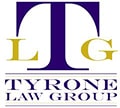Having an estate plan is an excellent way to reduce chaos in your demise and at the same time ensure that everyone gets what you want them to. For you to create a plan you need to consider a number of tips. These tips include:
Be clear about your intentions
Why are you creating the plan in the first place? You need to have a clear reason. Of course, your estate planning attorney can help you come up with a reason, but it should mainly come from you.
Most estate plans are motivated by tax planning, which is an important consideration in wealth transfer, but it is not the only one.
Understanding and expressing the “why” behind the planning can help alleviate the dread of the unknown, which can frequently lead to misunderstanding among family members, conflict among beneficiaries, and loss of family wealth.
So, how do you get started on the road to communication? The first step is to understand your values and how they affect the plan you put in place. Keep in mind that your values may differ from those of your heirs, or they may be the same but expressed differently.
Understanding your values is not intended to control your plan from beyond the grave by imposing those values on future beneficiaries, but rather to provide context for the many structures you have (or have not) implemented.
Understanding these underlying beliefs will help you stay grounded if you confront challenging inquiries from family members about the plan, as well as remind you why you did it.
Aim to build a values-based plan
A clear grasp of your basic beliefs is critical in determining your intentions for the assets you will distribute to or hold for your heirs. Discretionary trusts are a popular planning tool because of their flexibility and creditor protection, but they can keep trustees in the dark about distribution decisions.
Creating a non-binding side letter of wishes to advise a trustee can help maintain the values that guided the planning across generations while also lowering the likelihood that assets in the trust would be dispersed and spent in an unforeseen future.
Explaining why you funded a trust, aside from tax concerns, might be challenging. Writing a letter of wishes needs you to consider what the assets are for (and are not) and how you intend to use them to benefit present and future dependents.
For example, you can finance a trust with the aim of using it mostly for educational purposes but are hesitant to include that provision in the trust instrument due to uncertainties about the beneficiaries’ future needs or the expense of education.
You might finance a discretionary trust and write a letter of wishes stating your desire for the assets to be spent largely for education and why this was a significant motivating factor in establishing the trust.
This would allow the trustee to maintain flexibility while ensuring that beneficiaries understand the trust’s purpose and why specific distribution requests may be allowed or denied.
Letters of wishes may also include information on distributions that may be made if specific conditions are met. For example, the letter may say that beneficiaries would receive specific sums or percentages of trust assets at certain ages or milestones.
The trustee would not be required to make these distributions, which is important especially when there are reasons to keep assets in trust for a beneficiary or make payments on their behalf; however, guidance like this can be useful to a trustee administering the trust years after it is funded, especially if they were not involved in the trust creation.
Share the plan
Once all of the parts of the strategy are in place, the final stage is to share it, but probably not all at once. Sharing knowledge in digestible increments can maintain your family members’ attention and allow them to actively participate in the process by asking intelligent questions.
There is no one-size-fits-all method to this process, but it is frequently beneficial, to begin with some basic estate and financial planning education, which will serve as a foundation for the information you will give over time and assist your heirs in comprehending the many components of your plan.
This instructional element may also be useful for family members who need to start their basic planning.
Next, you may describe the work you did to discover the values that influenced your plan. You can talk about your aspirations for future generations and how your estate plan is designed to support those intentions while also addressing potential problems.
Many families then go on to share information on the various trusts or other entities they have established to pass down wealth.
This section of the talk does not need to involve precise monetary amounts; it is completely appropriate to keep it high-level and focused on the general framework.
You can collaborate with your estate planning lawyer Upper Marlboro to anticipate queries from family members and devise a strategy for dealing with potentially awkward circumstances, keeping in mind that you do not need all of the answers.
Parting shot
Whether the goal is to pass on generational wealth to your children or not, developing a plan based on fundamental principles and correctly communicating it at the appropriate times will assist in guaranteeing that your desires are carried out and your legacy carries on for future generations.
For the best outcome, take your time when creating the plan and always ensure that you let everyone involved know what is going on.
To have an easy time, work with experienced professionals who will not only help you put together the plan, but also advise you on what to include and what to omit in the plan. The professionals will also be your eyes when you are gone.
